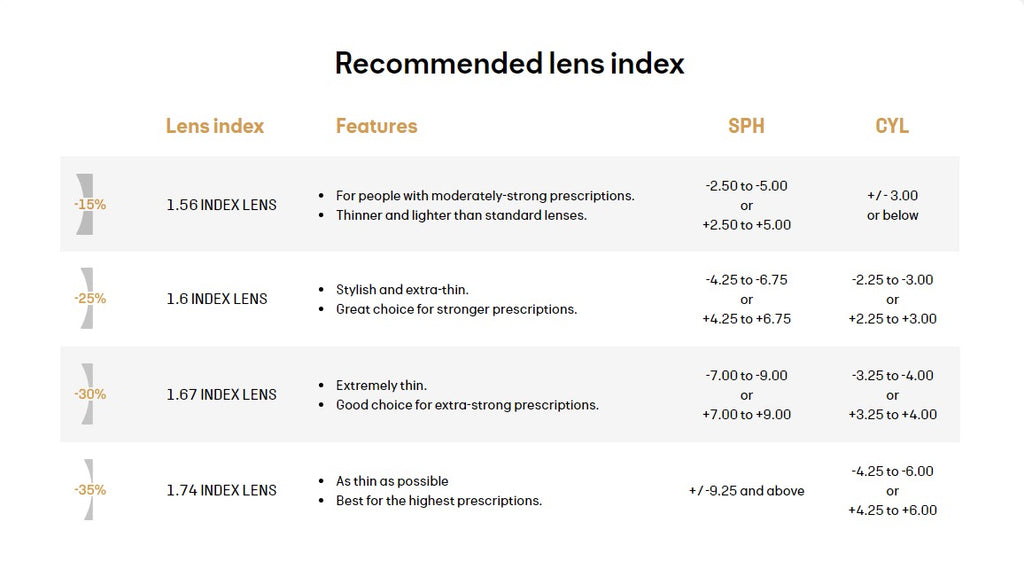How To Choose Lens Index for Your Glasses
High-index lenses are thinner than traditional options and can offer a number of benefits to glasses wearers. That’s especially true for people with high-strength prescriptions -- if you don’t want to be stuck with Coke-bottle lenses. Find out more about high-index lenses below, including five signs it might be time to check them out for yourself.
What are high-index lenses?
High-index lenses are made out of a specific type of plastic, unsurprisingly called high-index plastic. This material and the way the lenses are formed causes light to be refracted in a unique way, and that refraction allows for a stronger prescription to be packaged in a much thinner lens than you’d be able to get using other materials.
People often get high-index lenses confused with polycarbonate lenses. This is due in part to the popularity of polycarbonate in the 1980s and beyond. Polycarbonate material is extremely strong and can hold up to rougher wear than some other materials, which is why it’s still recommended today for people who engage in rugged activity or work. It’s also still recommended for children due to the fact that it’s less likely to crack.
Now that you understand how your lens thickness is determined, let’s check out the lens index options at Jollynova from thickest to thinnest:

1.56 Standard Index
This is our most basic lens type. It’s ideal for low prescriptions in the range of +2.50/-5.00 or below. If you have an extremely mild prescription, the standard index option will deliver the thinnest frame.
Keep in mind that this lens index only features 85%-90% UV protection in a clear lens. For 100% UV protection, you’ll want to select a higher lens index or a more advanced lens (such as our blue light-blocking lenses or photochromic lenses).
1.61 or 1.67 Common Index
When you have a medium or strong prescription, you need a high-index lens to keep your lenses thin. High-index lenses have good optical clarity, 100% UV protection, and excellent durability. They currently come in indices of 1.61, 1.67, and 1.74. All three lenses are made with similar materials, so the choice of the index comes down to your prescription strength.
A 1.67 high-index lens is best for +7.00/-9.00 or above. It can even be a good choice for people with low prescriptions who want the additional lens benefits mentioned above.
If you have a prescription that is +4.25/-6.75 or below, you’ll benefit from the thinness of a 1.61 high-index lens.
1.74 Strong Index
Strong prescriptions that are +9.25/-9.25 or above will work best with a 1.74 index lens. When you have a really strong prescription, a 1.74 high-index lens will be the thinnest option.